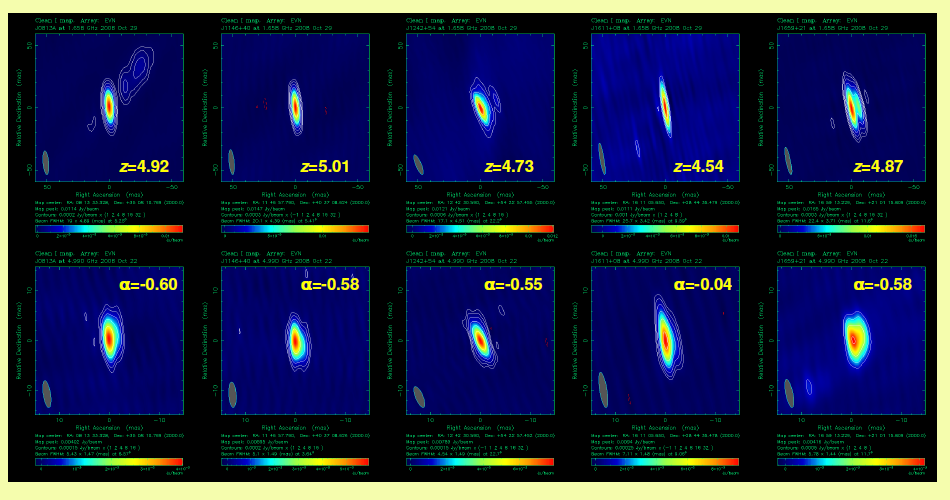Daily Image
07-01-2011Quasars at the Cosmic Horizon
| Submitter: | Zsolt Paragi |
| Description: | Until now there have been only seven quasars at redshifts greater than 4.5 observed with VLBI, see for example J1427+3312. This number was almost doubled in a mini-survey of the highest redshift quasars (4.5 < z < 5) with the European VLBI Network. These sources at great distances are especially interesting because they show how supermassive black holes evolved at the dawn of the Universe. With the VLBI technique it is possible to study these objects at the highest angular resolution. At moderate redshifts the most prominent quasars show an unresolved radio core with brightness temperatures at or exceeding 10^12 K, which indicates that their emission is relativistically beamed in our direction. They also have flat spectra, nearly constant flux density at GHz frequencies. However these properties are biased by a selection effect as well, because in the past mainly flat spectrum sources have been selected for VLBI studies to ensure detection. In recent surveys it has been found that there is a less-known steep-spectrum population of Active Galactic Nuclei (see e.g. the DEVOS Survey; the five new high redshift targets were selected in a similar way). There are two EVN images shown for each sources, one at 1.6 GHz (top) and the other at 5 GHz (bottom). It appears that the highest redshift quasars so far detected with VLBI have significantly lower brightness temperatures (~10^9 K), and tend to have steep spectra. This indicates that they are likely to be young, evolving objects, resembling the gigahertz peaked-spectrum (GPS) and compact steep-spectrum (CSS) sources that populate the Universe at lower redshifts. This result was published by Frey et al. (2010), Astronomy and Astrophysics 524, 83. |
| Copyright: | JIVE |
| Tweet |  |
